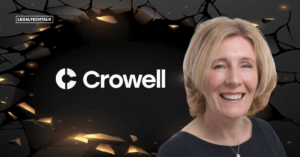Source: Thomson Reuters
Judge O’Grady in Kansas wanted to figure out how to reach more of his family law docket and prioritize the true problem cases. During a panel at the AALL conference, he explained how he partnered with NCSC and Colorado Law School to build a technology aid.
With modern legal technology solutions, the goal is to help lawyers do their job more accurately, quickly, and in greater service of the client. This comes in a number of different forms, with innovations in legal research, contract and transactional management, discovery, and more helping lawyers conduct their work in a better way.
However, the current focus of legal innovation also begs an interesting question: How do you help those that you might not even know have a problem?
Judge Keven M.P O’Grady of the Kansas 10th Judicial District, in Johnson County outside of Kansas City, was running into this exact problem. A former family law attorney himself, Judge O’Grady’s docket primarily deals with family law cases. And like many courts in the US, his court has dealt with capacity issues, a rising case load, and notably, dissatisfaction within the court itself. In particular, he noted that because court systems are designed to deal with the worst cases, those cases that had a relatively simple problem at their core were still subject to complex solutions.
“As a legal system, since we’re worried about the problem cases, we’ve set up all these hurdles and hoops for people to jump through,” Judge O’Grady explained. “It’s no surprise that people who come in for a simple process begin to resent the legal system.”
Read full article: https://www.thomsonreuters.com/en-us/posts/technology/building-court-triage-line/








